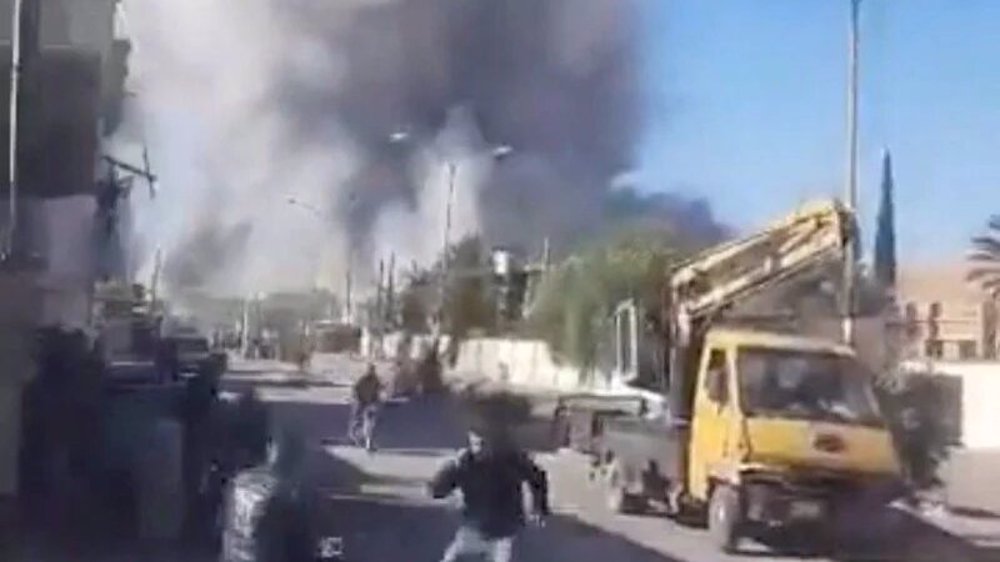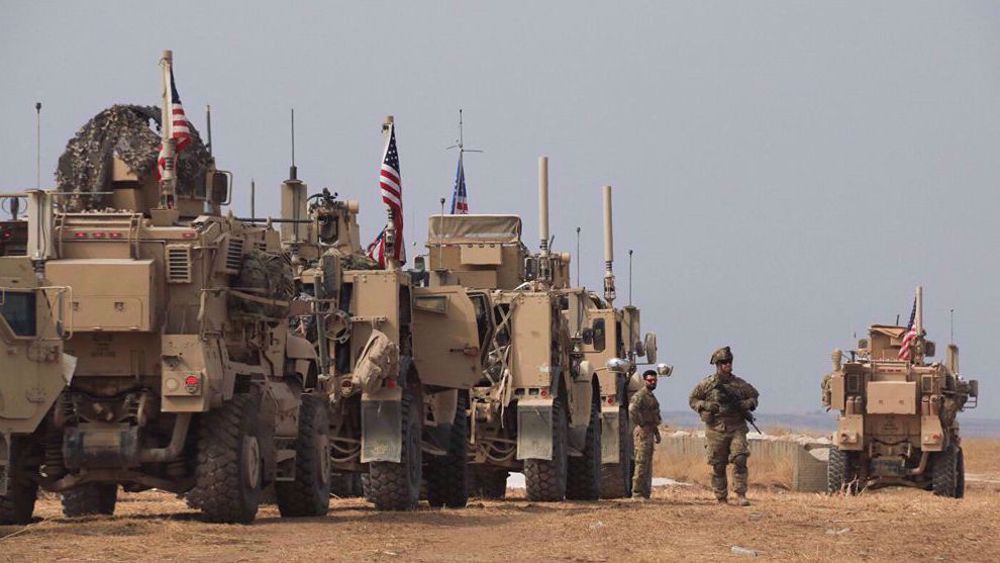Ex-inspector tells UN how OPCW whitewashed findings on Douma chemical attack
A former inspector with the Organization for the Prohibition of Chemical Weapons (OPCW) — tasked with investigating a suspected “chemical attack” on Syria’s Douma in 2018 — says the final report that the watchdog issued on the incident ran contrary to the findings of its own fact-finding mission.
Ian Henderson, who was a member of the OPCW team on Douma, made the comments in a recorded address to the UN Security Council during a session on Monday about the alleged chemical attack that occurred in April 2018, at a time when the Syrian army was about to win a battle against the foreign-backed militants then holed up in Douma.
Western states were quick to blame the Syrian government for the attack, and one week later, the US, Britain and France launched a coordinated missile strike against sites and research facilities near Damascus and Homs.
In the report released in March last year, the OPCW claimed it concluded that a toxic chemical containing chlorine had been used in the attack. The team was not mandated to assign blame for who used the toxic chemical.
However, Syria and Russia both rejected the findings, saying they believed the incident had been staged by the White Helmets, a group which claims to be a humanitarian NGO but has long been accused of working with anti-Damascus terrorists and staging false-flag gas attacks.
A now former OPCW specialist, Henderson, told members of the UN Security Council that the OPCW omitted key findings of its own inspections team which would have cast serious doubt on whether a chemical attack took place at all.
“The findings in the final [Fact Finding Mission] report were contradictory, were a complete turnaround with what the team had understood collectively during and after the Douma deployments,” Henderson said.
The Security Council meeting was called upon by Russian Permanent Representative Vasily Nebenzya to discuss the report prepared by OPCW into the alleged chemical attack.
Henderson presented himself as a non-political professional who is concerned with the integrity of the organization he worked with for many years.
Henderson described himself as a “former OPCW inspection team leader who served for about 12 years.” He said he had been invited by the Chinese minister counselor to the UN to attend the Security Council meeting, but had been denied a visa.
Along with his video statement, Henderson provided the council with a written statement.
Henderson said, “By the time of the release of the interim report in July 2018, we had serious misgivings that a chemical attack had occurred.”
“The (final FFM) report did not make clear what new findings facts, information, data, or analysis in the fields of witness testimony, toxicology studies, chemical analysis, engineering and/or ballistic studies had resulted in a complete turnaround in the situation from what was understood by the majority of the team, and the entire Douma team in July 2018,” he added.
Henderson carried out a closer analysis of a pair of cylinders mysteriously found in a residential area of Douma.
“In my case, I had followed up with a further six months of engineering and ballistics studies into the cylinders, the results of which had provided further support for the view that there had not been a chemical attack,” he said.
His ‘Engineering Assessment’ was initially leaked last May, laying out a number of hypotheses for how the cylinders had wound up at the site in Douma.
Most significantly, it noted a “higher probability” that they were “manually placed” instead of being “delivered from aircraft,” suggesting a party other than the Syrian government may have planted them there.
After Henderson’s comments were aired to the Security Council, the representative for the Russian Federation mentioned that they had invited the OPCW Director-General, and other OPCW officials to attend the meeting, but they chose not to participate.
Since November 2019, the whistleblower WikiLeaks website has released multiple OPCW documents and internal emails that not only support Henderson’s claims but also deal with discrepancies in levels of chlorine found in the area of the alleged attack.
Wikileaks has recently published several batches of documents suggesting the original probe had been significantly doctored and facts had been misinterpreted during the investigative missions on the ground.
‘Militants placed chlorine for provocative purposes’
Addressing the UNSC meeting on Monday, Russia’s Permanent Representative to the OPCW Alexander Shulgin said the alleged chemical attacks on Douma had been staged by the White Helmets and the chlorine displayed as evidence had been placed by militants for provocative purposes.
“The Syrian government forces and the Russian military police were in Douma a number of days after the so-called chemical attack, in hot pursuit we were able to find the Syrians who had been shown in the White Helmets video as the victims of the poisonous substances,” Shulgin said.
He added that the so-called “independent expertise” ignored the testimony of those people and “a conclusion was made stating the usage of chlorine as a so-called chemical weapon.
“This conclusion diverged from the observation of the Russian military experts who were sure that the [chlorine] reservoirs were placed by militants in the premises by hand for provocative purposes,” he said.
Hezbollah attacks Israeli forces after Lebanese homes blown up
World leaders, states hail ICC arrest warrants for Netanyahu, Gallant
MP: US accountable for possible Israeli 'foolishness' to attack Iraq
VIDEO | Israeli policies strangle Palestinian agriculture, economy
Iran's president offers condolences to Pakistan over terrorist attack
Canada’s Yukon town council at standstill over refusing oath to King Charles
Yemen's Houthi calls for jihad to protect Palestine against Israel
VIDEO | Internal rifts within Israel












 This makes it easy to access the Press TV website
This makes it easy to access the Press TV website